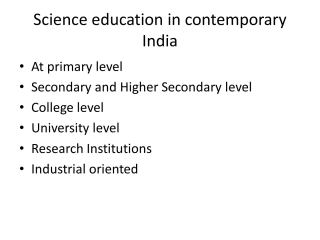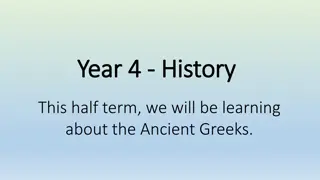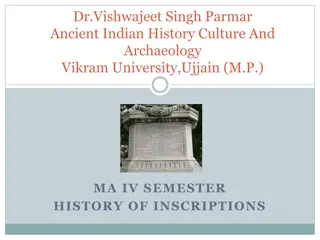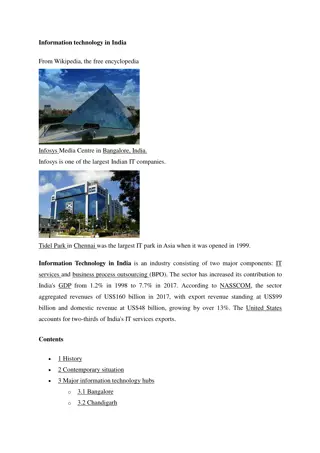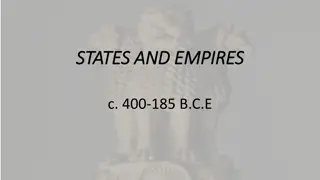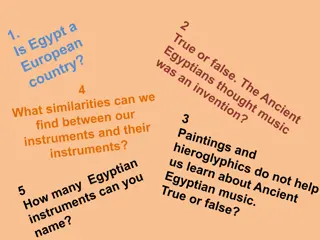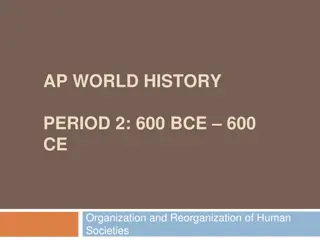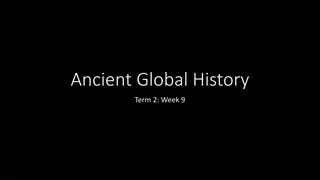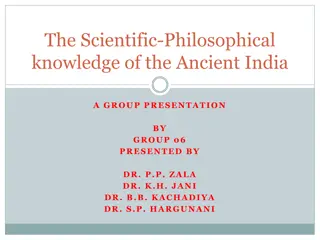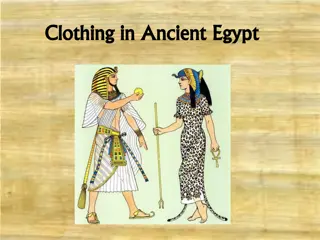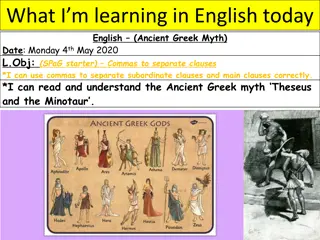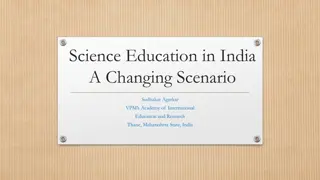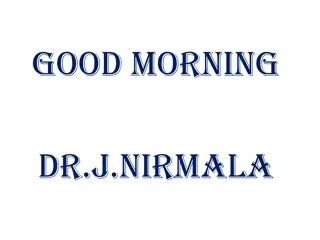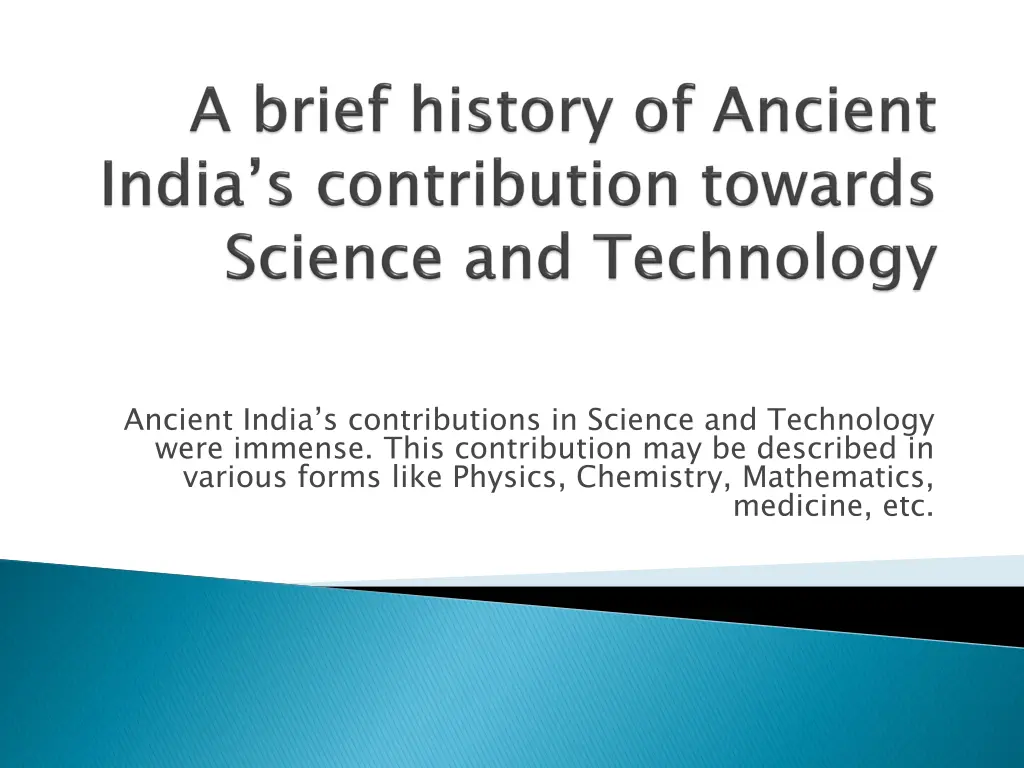
Ancient India's Contributions in Science and Technology
Explore the immense contributions of ancient India in various fields of science and technology, including physics, chemistry, mathematics, and medicine. Discover how Indian scholars conceptualized the universe, developed innovative systems such as the decimal system and binary system, and made significant advancements in metallurgy and astronomy. Also, delve into the rich heritage of Indian mathematics and the foundational role of ancient Indian texts in shaping scientific thought.
Download Presentation

Please find below an Image/Link to download the presentation.
The content on the website is provided AS IS for your information and personal use only. It may not be sold, licensed, or shared on other websites without obtaining consent from the author. If you encounter any issues during the download, it is possible that the publisher has removed the file from their server.
You are allowed to download the files provided on this website for personal or commercial use, subject to the condition that they are used lawfully. All files are the property of their respective owners.
The content on the website is provided AS IS for your information and personal use only. It may not be sold, licensed, or shared on other websites without obtaining consent from the author.
E N D
Presentation Transcript
Ancient Indias contributions in Science and Technology were immense. This contribution may be described in various forms like Physics, Chemistry, Mathematics, medicine, etc.
Indians conceptualized that the universe is composed of Panchbhutas Water, land, fire and either-each a medium of sense perception. They knew the existence of atoms and molecules even before the Greeks. Vaiseshika School elaborated the atomic theory. Brahamagupta anticipated Newton s theory of gravitation by declaring that All things fall on the Earth by law of nature and it is the nature of the Earth that attract the things.
India has made many important contributions notation system, binary system,decimal system, usage of zero and Ruler measurements. Indian notation system was adopted by Arabs and numerals are called Arabic in English. They are found in Ashokan inscription. Indians were the first to use the decimal system and Mathematician Aryabhatt was associated with it. Knowledge of Geometry is reflected in the Sulvasutras of 5th century BC. Aryabhatta (Surya Siddhanta) formulated the rule for finding out the areas of a triangle which led to the origin of Trigonometry.
Vedanga dealing exclusively with astronomy. It contains rules for calculating the position of new and full moon amongst the 27 nakshatras. Aryabhatt lunar eclipses, stated that the Sun is stationary and the Earth rotates around the Sun. He gave the value of pie ,and stated that the Earth is spherical in shape Varahamihira the Earth, and the Earth rotates around the Sun in his book Brihat Vedanga Jyotisha Jyotisha (500 BC) is the earliest source Aryabhatt explained the true cause of solar and Earth is Aryabhattiya. . spherical in shape in his book i.e. Aryabhattiya Varahamihira stated that the Moon rotates round Brihat Samhita Samhita. .
There was great development in Metallurgy various metals like gold, silver, copper, iron, brass and other alloys. Harappan statue of dancing girl is unique in itself. Post Maurya Period steel products exported to the west. Gupta period copper statue of Buddha from Sultanganj Delhi Metallurgy with large scale production of Harappan bronze steel products were copper statue of Buddha from Sultanganj and iron pillar of Delhi are the finest examples. iron pillar of Mehrauli Mehrauli at at
Hyms of Atharvaveda is associated with Ayurveda Charaksamhita the various diseases with cure and treatments, also about prevention and control through diet. Sursutasamhita kinds of diseases and operation with anaesthesia rhinoplasty Ayurveda. Charaksamhita of of Charak Charak (100 AD) refers to Sursutasamhita of of Sasruta Sasruta refers to various anaesthesia, surgical treatment, cataract, rhinoplasty etc. , surgical treatment, cataract,

